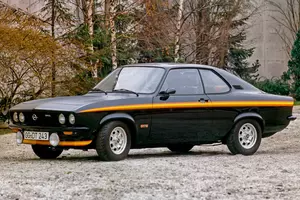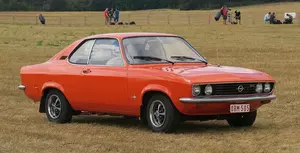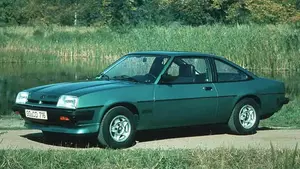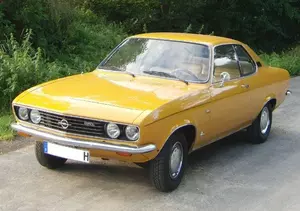
| Vehicle | Curb weight | Difference from world's smallest | Weight to power ratio | 0—60 mph acceleration ratio | Consumption ratio |
|---|---|---|---|---|---|
| 1.3 S |
980 kg / 2161 lbs |
555 kg (1224 lbs) heavier | 13 kg to 1 hp | 64 kg/s (141 lbs/s) | - |
| 1.8 S |
1025 kg / 2260 lbs |
600 kg (1323 lbs) heavier | 11 kg to 1 hp | 94 kg/s (207 lbs/s) | - |
| 2.0 S |
1030 kg / 2271 lbs |
605 kg (1334 lbs) heavier | 10 kg to 1 hp | 94 kg/s (207 lbs/s) | - |
| 2.0 GSi |
1090 kg / 2403 lbs |
665 kg (1466 lbs) heavier | 10 kg to 1 hp | 111 kg/s (245 lbs/s) | - |
| Vehicle | 1.3 S |
|---|---|
| Curb weight |
980 kg / 2161 lbs |
| Difference from world's smallest | 555 kg (555 lbs) heavier |
| Weight to power ratio | 13 kg to 1 hp |
| 0—60 mph acceleration ratio | 64 kg/s (141 lbs/s) |
| Consumption ratio | - |
| Vehicle | 1.8 S |
| Curb weight |
1025 kg / 2260 lbs |
| Difference from world's smallest | 600 kg (600 lbs) heavier |
| Weight to power ratio | 11 kg to 1 hp |
| 0—60 mph acceleration ratio | 94 kg/s (207 lbs/s) |
| Consumption ratio | - |
| Vehicle | 2.0 S |
| Curb weight |
1030 kg / 2271 lbs |
| Difference from world's smallest | 605 kg (605 lbs) heavier |
| Weight to power ratio | 10 kg to 1 hp |
| 0—60 mph acceleration ratio | 94 kg/s (207 lbs/s) |
| Consumption ratio | - |
| Vehicle | 2.0 GSi |
| Curb weight |
1090 kg / 2403 lbs |
| Difference from world's smallest | 665 kg (665 lbs) heavier |
| Weight to power ratio | 10 kg to 1 hp |
| 0—60 mph acceleration ratio | 111 kg/s (245 lbs/s) |
| Consumption ratio | - |

| Vehicle | Curb weight | Difference from world's smallest | Weight to power ratio | 0—60 mph acceleration ratio | Consumption ratio |
|---|---|---|---|---|---|
| 2.0 GSi |
1065 kg / 2348 lbs |
640 kg (1411 lbs) heavier | 10 kg to 1 hp | 112 kg/s (247 lbs/s) | - |
| 1.3 S |
965 kg / 2128 lbs |
540 kg (1191 lbs) heavier | 13 kg to 1 hp | 66 kg/s (146 lbs/s) | - |
| 2.0 200 Rallye Gruppe |
990 kg / 2183 lbs |
565 kg (1246 lbs) heavier | 5 kg to 1 hp | 160 kg/s (353 lbs/s) | - |
| 2.0 200 |
1065 kg / 2348 lbs |
640 kg (1411 lbs) heavier | 9 kg to 1 hp | 118 kg/s (260 lbs/s) | - |
| 1.8 S |
1000 kg / 2205 lbs |
575 kg (1268 lbs) heavier | 11 kg to 1 hp | 92 kg/s (203 lbs/s) | - |
| Vehicle | 2.0 GSi |
|---|---|
| Curb weight |
1065 kg / 2348 lbs |
| Difference from world's smallest | 640 kg (640 lbs) heavier |
| Weight to power ratio | 10 kg to 1 hp |
| 0—60 mph acceleration ratio | 112 kg/s (247 lbs/s) |
| Consumption ratio | - |
| Vehicle | 1.3 S |
| Curb weight |
965 kg / 2128 lbs |
| Difference from world's smallest | 540 kg (540 lbs) heavier |
| Weight to power ratio | 13 kg to 1 hp |
| 0—60 mph acceleration ratio | 66 kg/s (146 lbs/s) |
| Consumption ratio | - |
| Vehicle | 2.0 200 Rallye Gruppe |
| Curb weight |
990 kg / 2183 lbs |
| Difference from world's smallest | 565 kg (565 lbs) heavier |
| Weight to power ratio | 5 kg to 1 hp |
| 0—60 mph acceleration ratio | 160 kg/s (353 lbs/s) |
| Consumption ratio | - |
| Vehicle | 2.0 200 |
| Curb weight |
1065 kg / 2348 lbs |
| Difference from world's smallest | 640 kg (640 lbs) heavier |
| Weight to power ratio | 9 kg to 1 hp |
| 0—60 mph acceleration ratio | 118 kg/s (260 lbs/s) |
| Consumption ratio | - |
| Vehicle | 1.8 S |
| Curb weight |
1000 kg / 2205 lbs |
| Difference from world's smallest | 575 kg (575 lbs) heavier |
| Weight to power ratio | 11 kg to 1 hp |
| 0—60 mph acceleration ratio | 92 kg/s (203 lbs/s) |
| Consumption ratio | - |

| Vehicle | Curb weight | Difference from world's smallest | Weight to power ratio | 0—60 mph acceleration ratio | Consumption ratio |
|---|---|---|---|---|---|
| 1.2 N |
925 kg / 2040 lbs |
500 kg (1103 lbs) heavier | 17 kg to 1 hp | 47 kg/s (104 lbs/s) | - |
| 1.2 S |
925 kg / 2040 lbs |
500 kg (1103 lbs) heavier | 15 kg to 1 hp | 51 kg/s (112 lbs/s) | - |
| 1.3 N |
925 kg / 2040 lbs |
500 kg (1103 lbs) heavier | 15 kg to 1 hp | 54 kg/s (119 lbs/s) | - |
| 1.3 S |
1065 kg / 2348 lbs |
640 kg (1411 lbs) heavier | 14 kg to 1 hp | - | - |
| 1.6 N |
980 kg / 2161 lbs |
555 kg (1224 lbs) heavier | 16 kg to 1 hp | 59 kg/s (130 lbs/s) | - |
| 1.6 S |
1010 kg / 2227 lbs |
585 kg (1290 lbs) heavier | 13 kg to 1 hp | 76 kg/s (168 lbs/s) | - |
| 1.9 E |
1000 kg / 2205 lbs |
575 kg (1268 lbs) heavier | 10 kg to 1 hp | 100 kg/s (221 lbs/s) | - |
| 1.8 S |
1000 kg / 2205 lbs |
575 kg (1268 lbs) heavier | 11 kg to 1 hp | 92 kg/s (203 lbs/s) | - |
| 1.9 N |
1000 kg / 2205 lbs |
575 kg (1268 lbs) heavier | 13 kg to 1 hp | 75 kg/s (165 lbs/s) | - |
| 1.9 S |
1000 kg / 2205 lbs |
575 kg (1268 lbs) heavier | 11 kg to 1 hp | 92 kg/s (203 lbs/s) | - |
| 2.0 |
1020 kg / 2249 lbs |
595 kg (1312 lbs) heavier | 11 kg to 1 hp | 89 kg/s (196 lbs/s) | - |
| 2.0 E |
1000 kg / 2205 lbs |
575 kg (1268 lbs) heavier | 9 kg to 1 hp | 105 kg/s (232 lbs/s) | - |
| 2.0 S |
1020 kg / 2249 lbs |
595 kg (1312 lbs) heavier | 10 kg to 1 hp | 97 kg/s (214 lbs/s) | - |
| 2.4 400 |
1095 kg / 2414 lbs |
670 kg (1477 lbs) heavier | 8 kg to 1 hp | 154 kg/s (340 lbs/s) | - |
| Vehicle | 1.2 N |
|---|---|
| Curb weight |
925 kg / 2040 lbs |
| Difference from world's smallest | 500 kg (500 lbs) heavier |
| Weight to power ratio | 17 kg to 1 hp |
| 0—60 mph acceleration ratio | 47 kg/s (104 lbs/s) |
| Consumption ratio | - |
| Vehicle | 1.2 S |
| Curb weight |
925 kg / 2040 lbs |
| Difference from world's smallest | 500 kg (500 lbs) heavier |
| Weight to power ratio | 15 kg to 1 hp |
| 0—60 mph acceleration ratio | 51 kg/s (112 lbs/s) |
| Consumption ratio | - |
| Vehicle | 1.3 N |
| Curb weight |
925 kg / 2040 lbs |
| Difference from world's smallest | 500 kg (500 lbs) heavier |
| Weight to power ratio | 15 kg to 1 hp |
| 0—60 mph acceleration ratio | 54 kg/s (119 lbs/s) |
| Consumption ratio | - |
| Vehicle | 1.3 S |
| Curb weight |
1065 kg / 2348 lbs |
| Difference from world's smallest | 640 kg (640 lbs) heavier |
| Weight to power ratio | 14 kg to 1 hp |
| 0—60 mph acceleration ratio | - |
| Consumption ratio | - |
| Vehicle | 1.6 N |
| Curb weight |
980 kg / 2161 lbs |
| Difference from world's smallest | 555 kg (555 lbs) heavier |
| Weight to power ratio | 16 kg to 1 hp |
| 0—60 mph acceleration ratio | 59 kg/s (130 lbs/s) |
| Consumption ratio | - |
| Vehicle | 1.6 S |
| Curb weight |
1010 kg / 2227 lbs |
| Difference from world's smallest | 585 kg (585 lbs) heavier |
| Weight to power ratio | 13 kg to 1 hp |
| 0—60 mph acceleration ratio | 76 kg/s (168 lbs/s) |
| Consumption ratio | - |
| Vehicle | 1.9 E |
| Curb weight |
1000 kg / 2205 lbs |
| Difference from world's smallest | 575 kg (575 lbs) heavier |
| Weight to power ratio | 10 kg to 1 hp |
| 0—60 mph acceleration ratio | 100 kg/s (221 lbs/s) |
| Consumption ratio | - |
| Vehicle | 1.8 S |
| Curb weight |
1000 kg / 2205 lbs |
| Difference from world's smallest | 575 kg (575 lbs) heavier |
| Weight to power ratio | 11 kg to 1 hp |
| 0—60 mph acceleration ratio | 92 kg/s (203 lbs/s) |
| Consumption ratio | - |
| Vehicle | 1.9 N |
| Curb weight |
1000 kg / 2205 lbs |
| Difference from world's smallest | 575 kg (575 lbs) heavier |
| Weight to power ratio | 13 kg to 1 hp |
| 0—60 mph acceleration ratio | 75 kg/s (165 lbs/s) |
| Consumption ratio | - |
| Vehicle | 1.9 S |
| Curb weight |
1000 kg / 2205 lbs |
| Difference from world's smallest | 575 kg (575 lbs) heavier |
| Weight to power ratio | 11 kg to 1 hp |
| 0—60 mph acceleration ratio | 92 kg/s (203 lbs/s) |
| Consumption ratio | - |
| Vehicle | 2.0 |
| Curb weight |
1020 kg / 2249 lbs |
| Difference from world's smallest | 595 kg (595 lbs) heavier |
| Weight to power ratio | 11 kg to 1 hp |
| 0—60 mph acceleration ratio | 89 kg/s (196 lbs/s) |
| Consumption ratio | - |
| Vehicle | 2.0 E |
| Curb weight |
1000 kg / 2205 lbs |
| Difference from world's smallest | 575 kg (575 lbs) heavier |
| Weight to power ratio | 9 kg to 1 hp |
| 0—60 mph acceleration ratio | 105 kg/s (232 lbs/s) |
| Consumption ratio | - |
| Vehicle | 2.0 S |
| Curb weight |
1020 kg / 2249 lbs |
| Difference from world's smallest | 595 kg (595 lbs) heavier |
| Weight to power ratio | 10 kg to 1 hp |
| 0—60 mph acceleration ratio | 97 kg/s (214 lbs/s) |
| Consumption ratio | - |
| Vehicle | 2.4 400 |
| Curb weight |
1095 kg / 2414 lbs |
| Difference from world's smallest | 670 kg (670 lbs) heavier |
| Weight to power ratio | 8 kg to 1 hp |
| 0—60 mph acceleration ratio | 154 kg/s (340 lbs/s) |
| Consumption ratio | - |

| Vehicle | Curb weight | Difference from world's smallest | Weight to power ratio | 0—60 mph acceleration ratio | Consumption ratio |
|---|---|---|---|---|---|
| 1.3 N |
930 kg / 2051 lbs |
505 kg (1114 lbs) heavier | 16 kg to 1 hp | 54 kg/s (119 lbs/s) | - |
| 1.6 N |
985 kg / 2172 lbs |
560 kg (1235 lbs) heavier | 16 kg to 1 hp | 59 kg/s (130 lbs/s) | - |
| 1.9 N |
1030 kg / 2271 lbs |
605 kg (1334 lbs) heavier | 14 kg to 1 hp | 77 kg/s (170 lbs/s) | - |
| 2.0 E |
1040 kg / 2293 lbs |
615 kg (1356 lbs) heavier | 9 kg to 1 hp | 109 kg/s (240 lbs/s) | - |
| 2.0 |
1030 kg / 2271 lbs |
605 kg (1334 lbs) heavier | 11 kg to 1 hp | 90 kg/s (198 lbs/s) | - |
| 1.2 N |
930 kg / 2051 lbs |
505 kg (1114 lbs) heavier | 17 kg to 1 hp | 48 kg/s (106 lbs/s) | - |
| 1.2 S |
930 kg / 2051 lbs |
505 kg (1114 lbs) heavier | 16 kg to 1 hp | 51 kg/s (112 lbs/s) | - |
| 2.0 S |
1030 kg / 2271 lbs |
605 kg (1334 lbs) heavier | 10 kg to 1 hp | 98 kg/s (216 lbs/s) | - |
| Vehicle | 1.3 N |
|---|---|
| Curb weight |
930 kg / 2051 lbs |
| Difference from world's smallest | 505 kg (505 lbs) heavier |
| Weight to power ratio | 16 kg to 1 hp |
| 0—60 mph acceleration ratio | 54 kg/s (119 lbs/s) |
| Consumption ratio | - |
| Vehicle | 1.6 N |
| Curb weight |
985 kg / 2172 lbs |
| Difference from world's smallest | 560 kg (560 lbs) heavier |
| Weight to power ratio | 16 kg to 1 hp |
| 0—60 mph acceleration ratio | 59 kg/s (130 lbs/s) |
| Consumption ratio | - |
| Vehicle | 1.9 N |
| Curb weight |
1030 kg / 2271 lbs |
| Difference from world's smallest | 605 kg (605 lbs) heavier |
| Weight to power ratio | 14 kg to 1 hp |
| 0—60 mph acceleration ratio | 77 kg/s (170 lbs/s) |
| Consumption ratio | - |
| Vehicle | 2.0 E |
| Curb weight |
1040 kg / 2293 lbs |
| Difference from world's smallest | 615 kg (615 lbs) heavier |
| Weight to power ratio | 9 kg to 1 hp |
| 0—60 mph acceleration ratio | 109 kg/s (240 lbs/s) |
| Consumption ratio | - |
| Vehicle | 2.0 |
| Curb weight |
1030 kg / 2271 lbs |
| Difference from world's smallest | 605 kg (605 lbs) heavier |
| Weight to power ratio | 11 kg to 1 hp |
| 0—60 mph acceleration ratio | 90 kg/s (198 lbs/s) |
| Consumption ratio | - |
| Vehicle | 1.2 N |
| Curb weight |
930 kg / 2051 lbs |
| Difference from world's smallest | 505 kg (505 lbs) heavier |
| Weight to power ratio | 17 kg to 1 hp |
| 0—60 mph acceleration ratio | 48 kg/s (106 lbs/s) |
| Consumption ratio | - |
| Vehicle | 1.2 S |
| Curb weight |
930 kg / 2051 lbs |
| Difference from world's smallest | 505 kg (505 lbs) heavier |
| Weight to power ratio | 16 kg to 1 hp |
| 0—60 mph acceleration ratio | 51 kg/s (112 lbs/s) |
| Consumption ratio | - |
| Vehicle | 2.0 S |
| Curb weight |
1030 kg / 2271 lbs |
| Difference from world's smallest | 605 kg (605 lbs) heavier |
| Weight to power ratio | 10 kg to 1 hp |
| 0—60 mph acceleration ratio | 98 kg/s (216 lbs/s) |
| Consumption ratio | - |

| Vehicle | Curb weight | Difference from world's smallest | Weight to power ratio | 0—60 mph acceleration ratio | Consumption ratio |
|---|---|---|---|---|---|
| 1.2 |
865 kg / 1907 lbs |
440 kg (970 lbs) heavier | 14 kg to 1 hp | 51 kg/s (112 lbs/s) | - |
| 1.6 |
945 kg / 2084 lbs |
520 kg (1147 lbs) heavier | 13 kg to 1 hp | 66 kg/s (146 lbs/s) | - |
| 1.9 GT/E |
980 kg / 2161 lbs |
555 kg (1224 lbs) heavier | 9 kg to 1 hp | 90 kg/s (198 lbs/s) | - |
| 1.6 S |
945 kg / 2084 lbs |
520 kg (1147 lbs) heavier | 12 kg to 1 hp | 71 kg/s (157 lbs/s) | - |
| 1.9 S |
945 kg / 2084 lbs |
520 kg (1147 lbs) heavier | 11 kg to 1 hp | 76 kg/s (168 lbs/s) | - |
| Vehicle | 1.2 |
|---|---|
| Curb weight |
865 kg / 1907 lbs |
| Difference from world's smallest | 440 kg (440 lbs) heavier |
| Weight to power ratio | 14 kg to 1 hp |
| 0—60 mph acceleration ratio | 51 kg/s (112 lbs/s) |
| Consumption ratio | - |
| Vehicle | 1.6 |
| Curb weight |
945 kg / 2084 lbs |
| Difference from world's smallest | 520 kg (520 lbs) heavier |
| Weight to power ratio | 13 kg to 1 hp |
| 0—60 mph acceleration ratio | 66 kg/s (146 lbs/s) |
| Consumption ratio | - |
| Vehicle | 1.9 GT/E |
| Curb weight |
980 kg / 2161 lbs |
| Difference from world's smallest | 555 kg (555 lbs) heavier |
| Weight to power ratio | 9 kg to 1 hp |
| 0—60 mph acceleration ratio | 90 kg/s (198 lbs/s) |
| Consumption ratio | - |
| Vehicle | 1.6 S |
| Curb weight |
945 kg / 2084 lbs |
| Difference from world's smallest | 520 kg (520 lbs) heavier |
| Weight to power ratio | 12 kg to 1 hp |
| 0—60 mph acceleration ratio | 71 kg/s (157 lbs/s) |
| Consumption ratio | - |
| Vehicle | 1.9 S |
| Curb weight |
945 kg / 2084 lbs |
| Difference from world's smallest | 520 kg (520 lbs) heavier |
| Weight to power ratio | 11 kg to 1 hp |
| 0—60 mph acceleration ratio | 76 kg/s (168 lbs/s) |
| Consumption ratio | - |